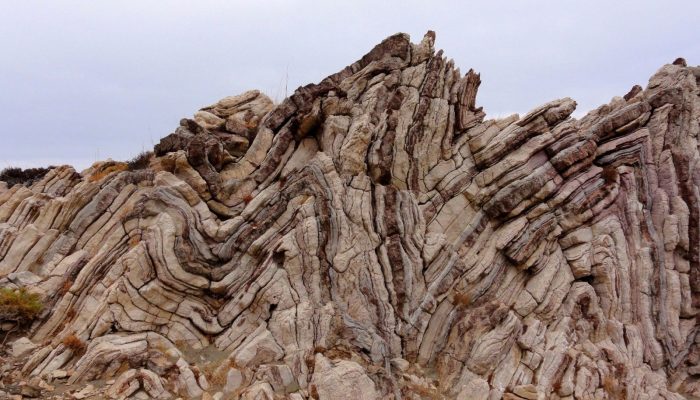
Folding is one of the most common geologic phenomena in the world. I should start with defining the term ‘deformation’ in order to understand the folding process better.
In geology, deformation is an alteration of the size or shape of rocks. Deformation is caused by stress, the scientific term for force applied to a certain area. Stresses on rocks can stem from various sources, such as changes in temperature or moisture, shifts in the Earth’s plates, sediment buildup or even gravity.
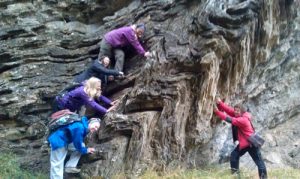
Z folds in the Alba Syncline. Did they really make it? They are geologist so they can 🙂 Photo credit: by Erin Kennedy distrubted via geology.blogs.brynmawr.
There are three types of rock deformation. Elastic deformation is temporary and is reversed when the source of stress is removed. Ductile deformation is irreversible, resulting in a permanent change to the shape or size of the rock that persists even when the stress stops. A fracture is considered as brittle deformation, whereas folding is considered as ductile deformation. The third one type is viscous deformation is the behavior of the fluids such as magma.
Certain factors determine which type of deformation rocks will exhibit when exposed to stress. These factors are rock type, strain rate, pressure and temperature. For instance, higher temperatures and pressures encourage ductile deformation. This is common deep within the Earth, where, due to higher temperatures and pressure than nearer the surface, rocks tend to be more ductile.
But, nowadays we find rocks from deep regions exposed at the surface. How? The answer is ‘uplift’, the balance between the rate of magma intrusion into the crust, erosion, and the relative densities of the continental crust and the mantle.
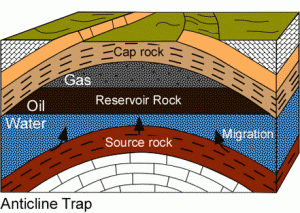
Anticline Trap. Anticline is a structural trap for petroleum. Image reproduced from original source.
Folding is a manner for sedimentary and metamorphic rocks. Different layers in those rocks help geologist to understand structures.
Last but not least, Anticlines (type of folding) are important types of “structural traps” in petroleum geology.
To sum it up, Folds are significant structures for either in structural or economic geology. They are, moreover, remarkable phenomenon for people due to their great looking like many other geologic structure.

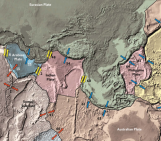
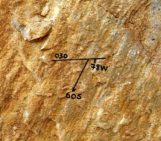
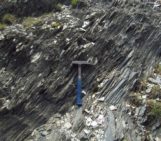
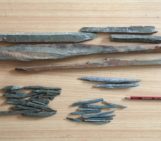
Jitendra Singh
A very good explanation of folding, cleared the concept thoroughly.
Thanks
NIYOMUGABO Thomas
The notes are very clear and well organised and explained.
Igot the point.